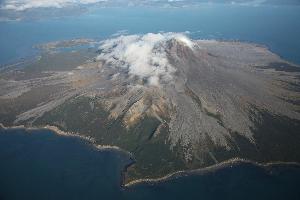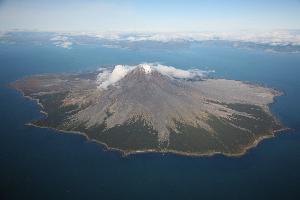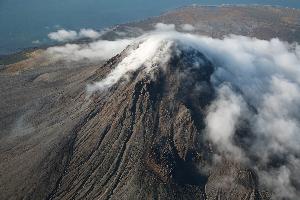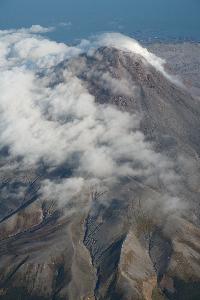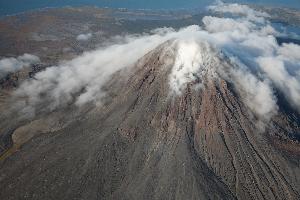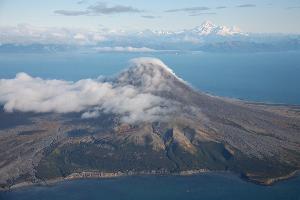
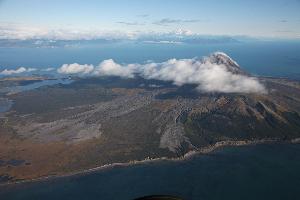
Steaming dome of Mount St Augustine with snowcovered Iliamna volcano in the background. View from SW, Sept. 2007.
Mount St Augustine with Iliamna volcano in the background. View from WSW, Sept. 2007. Lighter areas represent pyroclastic flow deposits emplaced during the explosive phase of the 2005/6 eruption.
